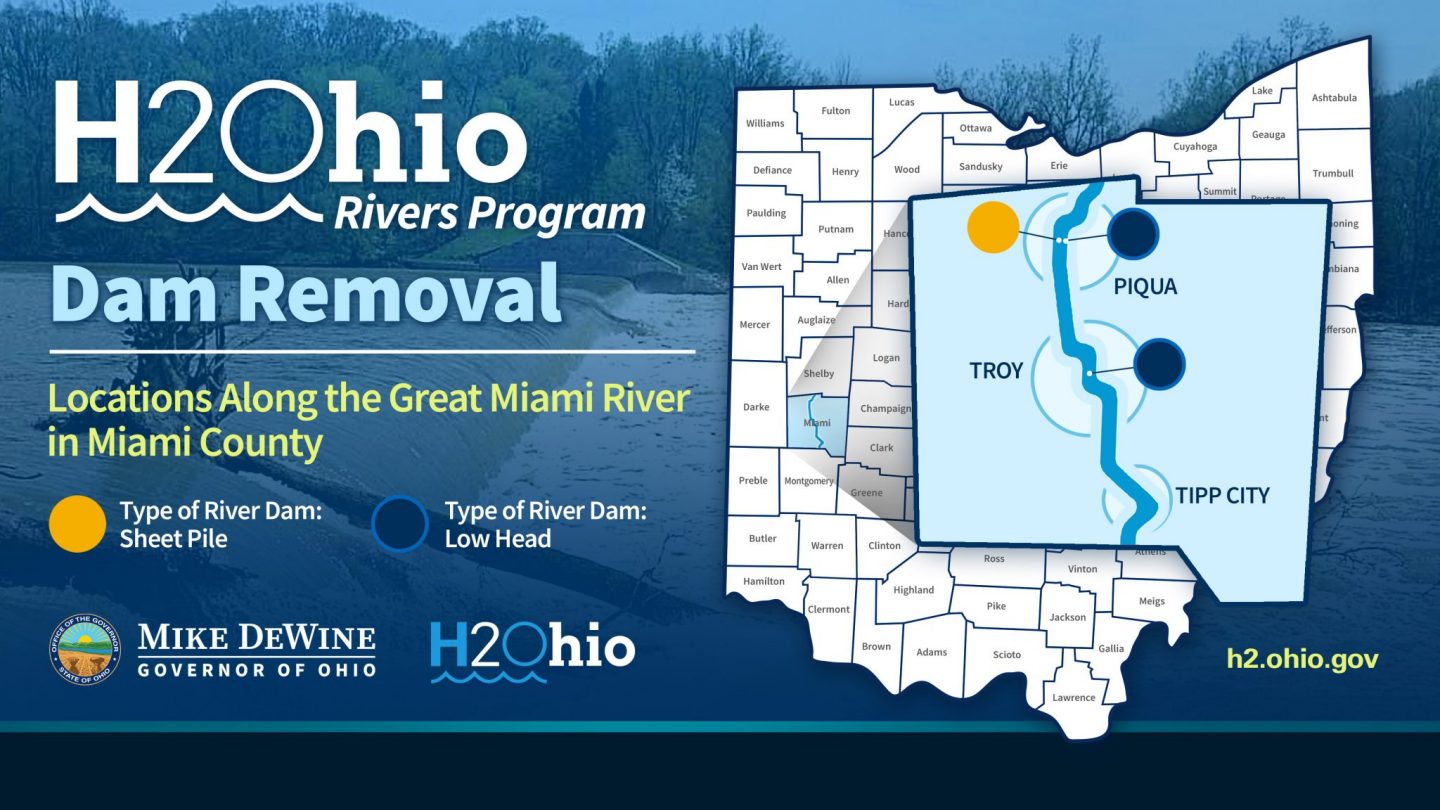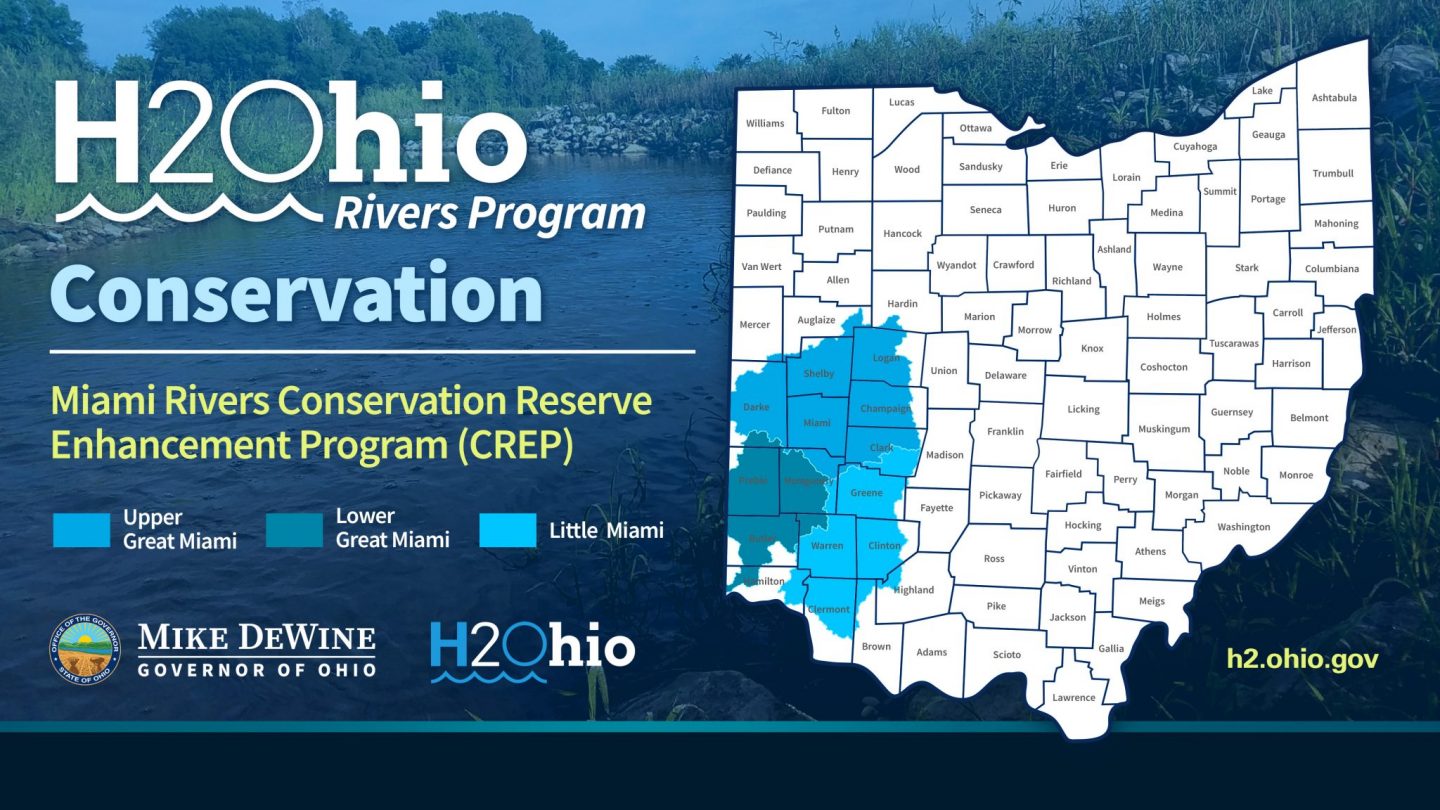New H2Ohio Rivers program will focus on PFAS, dam removal, land conservation, and more.
Ohio Governor Mike DeWine today announced the expansion of H2Ohio, the state’s comprehensive, data-driven strategy to improve water quality throughout Ohio.
Since launching in 2019, H2Ohio has primarily focused on water infrastructure replacement in low-income areas, statewide wetland creation, and the reduction of algal-bloom-causing agricultural runoff into Lake Erie. The new H2Ohio Rivers program will expand the initiative’s overall goals to also focus on improving and maintaining the health of Ohio’s large rivers.
“We know that river health in Ohio has improved tremendously in the last several decades, but there is still more work to do,” said Governor DeWine. “Water is one of Ohio’s greatest assets, and my administration is dedicated to protecting this invaluable resource.”
The expansion of H2Ohio is taking place with support from the Ohio General Assembly, which allotted approximately $270 million in funding to H2Ohio in the state’s current operating budget. Of the total funds, around $47 million is dedicated to the H2Ohio Rivers program over the biennium to support the work of the Ohio Environmental Protection Agency (Ohio EPA), Ohio Department of Natural Resources (ODNR), Ohio Department of Agriculture (ODA), and various local partners to examine a variety of issues impacting river health. These issues include, but are not limited to, the focus areas listed below.
PFAS River Contamination
As part of the H2Ohio Rivers program, Ohio will become the first state in the nation to undergo a statewide survey to measure its large rivers for the existence of per- and polyfluoroalkyl (PFAS) substances.
PFAS, often referred to as “forever chemicals,” are manmade compounds used in the production of numerous consumer and industrial products, which have been linked to serious health issues including kidney and testicular cancer, thyroid disease, low birth weight, and high cholesterol.
To measure PFAS contamination, Ohio EPA will collect water samples and aquatic life tissue specimens in 29 of Ohio’s rivers. Once analyzed, the baseline measurement findings will be used to inform Ohio’s work to remediate any contamination and will give insight on the potential for any sport fish consumption advisories.

“Testing for PFAS in Ohio’s rivers is just the latest of several steps that the DeWine-Husted Administration has taken to protect Ohioans from the largely unknown risks associated with PFAS exposure,” said Anne M. Vogel, director of the Ohio EPA.
In 2019, Governor DeWine ordered the development of a PFAS Action Plan to sample Ohio’s public drinking water systems for certain PFAS compounds. Testing revealed detections in just 6 percent of Ohio’s nearly 1,550 public water systems. Phase two of the action plan, now underway, focuses on the prevention of future PFAS contamination in water systems and private wells.
River sampling is expected to be complete in the fall of 2024. The Ohio River is not part of H2Ohio PFAS contamination study as it is already tested regularly by outside entities.
Dam Removal and Mussel Study
The H2Ohio Rivers program will work to remove or modify deteriorating dams that have outlived their intended use and are harming water quality thorough oxygen depletion, trapped sediment, and interrupted fish migration.
The first dam projects to receive H2Ohio Rivers funding are in Miami County. The funding will support the removal of the Great Miami River dams in both Troy and Piqua and the modification of Piqua’s sheet pile dam to allow for fish passage, recreational activities, and habitat restoration. Combined, these dam projects will open five miles of the Great Miami River.
Both the Ohio EPA and ODNR will award H2Ohio Rivers funding for dam removal across the state.
“We are excited to expand our water quality efforts into Ohio rivers, increasing accessibility to clean water for communities across the state,” said ODNR Director Mary Mertz. “The initiative we’re taking through the H2Ohio Rivers program will indicate which rivers need the most help and which rivers are healthy in order to help us plan how to approach both scenarios.”

ODNR will also launch an H2Ohio Rivers survey of freshwater mussels, which are an important indicator of water quality due to their sensitivity to pollutants. This comprehensive study of ecologic conditions in Ohio’s rivers is expected to begin in the spring of 2024. The results will be used to inform future strategies to improve and maintain healthy river ecosystems.
Land Conservation
The H2Ohio Rivers program will work to improve water quality by preserving and protecting riverside forests, known as riparian buffers. The trees and vegetation in these land-water transition zones prevent water quality degradation through the uptake of nutrients that can otherwise pollute waterways. Riparian buffers also provide important wildlife and aquatic habitat.
In partnership between ODNR and ODA, the H2Ohio Rivers program will also partner with the U.S. Department of Agriculture to launch a Conservation Reserve Enhancement Program (CREP) for the Great Miami River watershed and State Scenic Little Miami River watershed. CREP, already active in both the Lake Erie and Scioto watersheds, incentivizes farmers to voluntarily set aside environmentally sensitive acreage to reduce nutrient and sediment runoff and protect water quality.
The new CREP area is more than 60 percent agricultural land use, with 1.9 million acres of cropland. H2Ohio Rivers aims to put more than 60,000 acres into CREP practices, such as grassland buffers, forested riparian buffers, and drainage water management practices.
“Farmers are the original conservationists,” said ODA Director Brian Baldridge. “With the expansion of Ohio’s CREP, producers who have land that may not be productive in row-crop agriculture will now be eligible for conservation practices that will improve water quality in the Miami River watershed and beyond.”

CREP aligns with the work of H2Ohio’s incentive program for agriculture producers who implement H2Ohio’s proven agricultural best management practices that improve water quality by decreasing farm nutrient runoff. Currently available only to farmers in the Western Lake Erie Basin, producers anywhere in the state will be eligible to participate in H2Ohio beginning in 2024.
-30-

Recent Comments